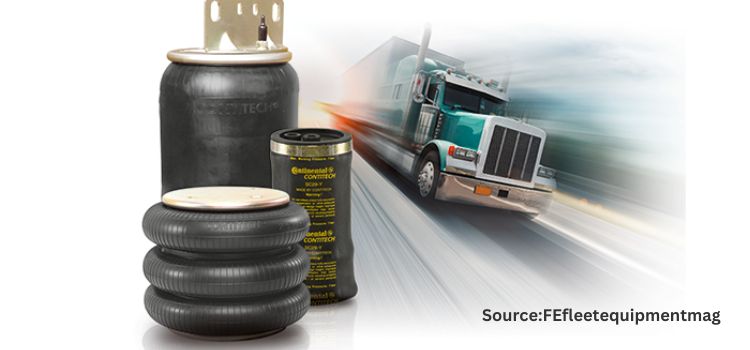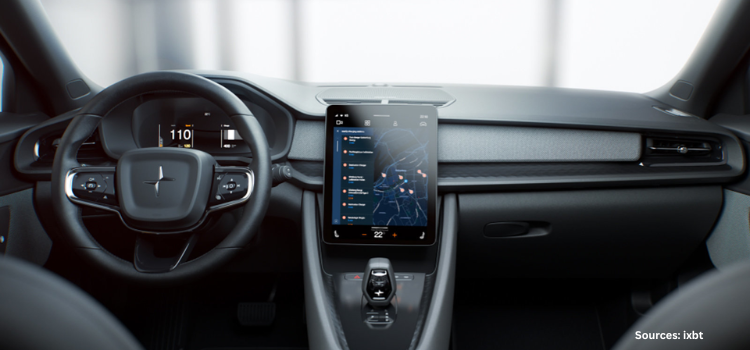Discover the Futuristic Technologies of Active Seat Belt Systems
15-Feb-2025

Seat belts have come a long way since their inception, transitioning from basic lap belts to advanced three-point harnesses and subsequently to active seat belt systems. The primary function of seat belts remains unchanged – to restrain occupants and minimize injury during crashes. However, with the advent of active safety systems, seat belts now play a more dynamic role in protecting vehicle occupants.
In the landscape of automotive safety, seat belts stand as a fundamental component, safeguarding occupants during vehicular collisions. However, as technological advancements continue to reshape the automotive landscape, traditional seat belts are evolving into sophisticated active systems that offer enhanced protection and customization. This blog explores the innovations driving the future of active seat belt systems, delving into the latest technologies and advancements that promise to revolutionize vehicle safety:
Artificial Intelligence (AI) Integration: AI-driven seat belt systems leverage machine learning algorithms to analyze real-time data from various sensors and cameras within the vehicle. This enables the system to adaptively adjust belt tension, positioning, and other safety parameters based on occupant behavior and driving conditions. By continuously learning and adapting, AI-powered seat belts provide personalized protection tailored to each occupant's needs.
As an example, Hazen.ai introduced an AI-powered, edge-based software for mobile phone and seatbelt detection, boasting over 90% accuracy. With global trials showing positive results, it aims to enhance road safety efficiently and cost-effectively.
Multi-Stage Load Limiters (MSLL): Multi-stage load limiters enhance seat belt performance by adjusting the force exerted on the occupant during a collision. By dynamically regulating belt tension based on the severity of the impact, MSLL systems optimize protection while minimizing the risk of injury. This innovative technology ensures that occupants receive the appropriate level of restraint, regardless of the crash scenario.
Curious About the Active Seat Belt System Market? Request a Free Sample
Recently, ZF launched a seat belt system, featuring the Multi-Stage Load Limiter (MSLL), adjusts belt force based on occupants' size and weight, reducing accident impact and meeting NCAP Roadmap 2030 standards. With individual system adjustment and enhanced safety system integration, it offers intelligent seat belt solutions for diverse crash scenarios.
Smart Seat Belt Technology: Smart seat belt systems utilize sensor-based hazard response mechanisms to detect potential collision scenarios in advance. These systems preemptively adjust belt tension and positioning to mitigate the effects of a crash, providing occupants with an additional layer of protection. By integrating with the vehicle's safety systems, smart seat belts enhance overall safety during hard braking or imminent collisions.
Notably, Autoliv's smart seat belts adjust restraint force based on crash severity, enhancing safety for occupants, especially the elderly and smaller individuals. Implemented in vehicles such as the BMW 7-series and Mercedes E-Class, they address concerns such as high chest loads and rib fractures, crucial as the elderly car occupant population rises.
Electromechanical Belt Tensioners: Electromechanical belt tensioners enhance seat belt effectiveness by reducing slack and ensuring optimal belt positioning. In the event of a crash, these tensioners activate rapidly, removing excess belt slack and securing occupants in place. By maintaining proper belt tension, electromechanical tensioners help prevent occupants from experiencing excessive movement during a collision, thereby reducing the risk of injury.
For example, ZF's innovative connected belt system, featuring the ACR8 electromechanical belt tensioner, enhances safety during collisions by actively adjusting seating positions. This technology reduces belt slack, sends haptic warnings, and leverages vehicle sensors to proactively reposition occupants, thereby improving the restraint system's effectiveness in mitigating crash consequences.
Zero-Gravity Seats with Integrated Airbags: Zero-gravity seats equipped with integrated airbags represent the pinnacle of active seat belt technology. These innovative seats combine the benefits of traditional seat belts with the added protection of airbags. In the event of a collision, the integrated airbags deploy rapidly, providing occupants with cushioning and additional restraint. This advanced safety feature ensures maximum protection for vehicle occupants, especially during high-speed impacts.
As an example, Autoliv showcased advanced safety innovations at Auto Shanghai 2023, including an integrated cockpit, a zero-gravity seat, and the Star steering wheel. These solutions enhance safety, comfort, and driving experiences, aligning with global automotive trends such as self-driving cars and increased connectivity. Autoliv's commitment to delivering new safety solutions integrates advanced technologies to meet evolving industry needs in China and worldwide.
Real-time Monitoring Systems: Real-time monitoring systems represent a significant advancement in active seat belt systems, enabling continuous surveillance of passenger behavior and environmental conditions. These systems utilize sensors and cameras to monitor various parameters such as occupant posture, belt usage, and driving dynamics in real-time. By analyzing this data instantaneously, the seat belt system can adapt its functionality to ensure optimal protection for occupants during various driving scenarios, including sudden maneuvers or collisions.
Notably, Teletrac Navman's new seatbelt monitoring device improves road safety and ensures compliance by providing real-time usage data, aiding fleet managers in addressing non-compliance. Integrating this tech into fleet management systems promotes safer driving and potentially lowers insurance costs.
In conclusion, with the advancements in the automotive technology active seat belt systems are poised to play a pivotal role in enhancing vehicle safety. From AI-driven intelligence to multi-stage load limiters and smart seat belt technology, these innovations are transforming traditional seat belts into intelligent safety systems capable of adapting to a wide range of driving scenarios. With continued research and development, active seat belt systems will undoubtedly remain at the forefront of automotive safety, protecting occupants and saving lives on the road.
ABOUT THE AUTHOR
 Shyam Gupta is a passionate and highly enthusiastic researcher with over four years of experience. He is dedicated to assisting clients in overcoming challenging business obstacles by providing actionable insights through exhaustive research. Shyam has a keen interest in various industries, including Aersospace & Defense, ICT & Media, and Telecoms & Internet. He consistently endeavors to deliver valuable perspectives in these areas. In addition to his research work, Shyam enjoys sharing his thoughts and ideas through articles and blogs. During his leisure time, he finds solace in the world of literature and art, often engrossed in reading and expressing his creativity through painting. The author can be reached at info@nextmsc.com
Shyam Gupta is a passionate and highly enthusiastic researcher with over four years of experience. He is dedicated to assisting clients in overcoming challenging business obstacles by providing actionable insights through exhaustive research. Shyam has a keen interest in various industries, including Aersospace & Defense, ICT & Media, and Telecoms & Internet. He consistently endeavors to deliver valuable perspectives in these areas. In addition to his research work, Shyam enjoys sharing his thoughts and ideas through articles and blogs. During his leisure time, he finds solace in the world of literature and art, often engrossed in reading and expressing his creativity through painting. The author can be reached at info@nextmsc.com
Add Comment
Related Blogs
Advent of Latest Technologies Changing the Dynamics of Air Spring Industry
The air spring industry includes the design, manufacture, di...
From Dashboard to Dashboarding: How Tech is Transforming Car Interiors
Introduction In today's rapidly evolving automotive l...










